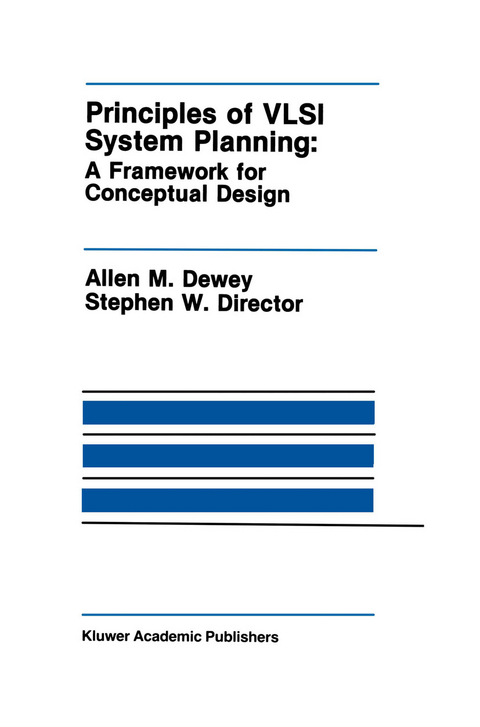
Principles of VLSI System Planning
Springer (Verlag)
978-0-7923-9102-9 (ISBN)
1 Introduction.- 1.1 Benefits of VLSI System Planning.- 1.2 VLSI System Planning Overview.- 1.3 Comparisons to Previous Related Efforts.- 1.4 Organization of Book.- 2 Alternatives Exploration.- 2.1 Formalizing Design Knowledge.- 2.2 Hierarchy: Controlling Complexity.- 2.3 Constraints.- 2.4 Delaying Design Decisions.- 2.5 Backtracking: Changing Design Decisions.- 3 Design Assistance.- 3.1 Advice.- 3.2 Prediction.- 4 General Software Architecture.- 4.1 User Interface.- 4.2 Conventional/AI Software Integration.- 4.3 The Knowledge Base.- 5 A DSP VLSI System Planner.- 5.1 Algorithmic and Architectural Issues.- 5.2 Logical Level Issues.- 5.3 Circuit and Physical Level Issues.- 6 A DSP Prediction Methodology.- 6.1 Algorithmic Level Predictions.- 6.2 Architectural Level Predictions.- 6.3 Logical Level Predictions.- 6.4 Physical Level Predictions.- 6.5 Experimental Results.- 7 Yoda: Sample Planning Session.- 7.1 Constraints and Delaying Decisions.- 7.2 Advice and Consistency Constraints.- 7.3 Qualitative and Quantitative Advice.- 7.4 Context Switching and Subplans.- 7.5 Backtracking.- 7.6 Invoking Prediction Models.- 8 Summary.- 8.1 Future Work.- A Commercial Digital Filter ICs.- A.1 TRW.- A.2 NCR.- A.3 Harris.- A.4 Zoran.- A.5 Inmos.- A.6 Motorola.- B Software Implementation Details.- B.1 Bicorporal Architecture.- B.2 Alternatives Exploration Subsystem.- B.2.1 Representing Plans.- B.2.2 Representing Constraints.- B.3 Design Assistance Subsystem.- B.3.1 Representing Knowledge Sources.- B.4 Code Management.- Biblography.
| Erscheint lt. Verlag | 31.5.1990 |
|---|---|
| Reihe/Serie | The Springer International Series in Engineering and Computer Science ; 97 |
| Zusatzinfo | XX, 202 p. |
| Verlagsort | Dordrecht |
| Sprache | englisch |
| Maße | 155 x 235 mm |
| Themenwelt | Mathematik / Informatik ► Informatik ► Theorie / Studium |
| Informatik ► Weitere Themen ► CAD-Programme | |
| Technik ► Elektrotechnik / Energietechnik | |
| ISBN-10 | 0-7923-9102-0 / 0792391020 |
| ISBN-13 | 978-0-7923-9102-9 / 9780792391029 |
| Zustand | Neuware |
| Haben Sie eine Frage zum Produkt? |
aus dem Bereich


